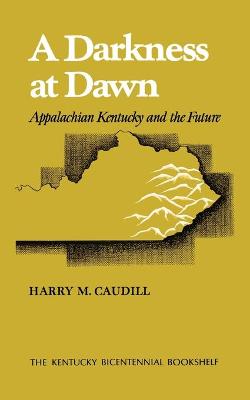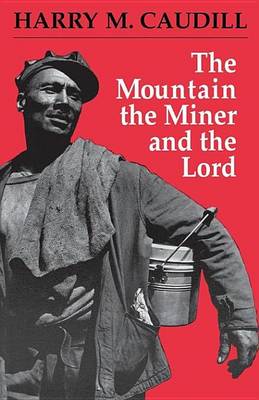Kentucky Bicentennial Bookshelf
2 total works
Outspoken Appalachian writer Harry M. Caudill analyzes the exploitation and decline of the eastern Kentucky mountain lands, which have rendered "no people in the nation...more forlorn than the Appalachian highlanders in our time." Frontier attitudes, a strong attachment to the land, and isolation have produced in Appalachia a backwoods culture which made its people susceptible to an outside exploitation of their resources that has perpetrated on them a passive society largely dependant on relief.
But the times, says Mr. Caudill, are changing. A growing world population and global industrialization have created a drastically altered situation in eastern Kentucky. The area's resources of energy are essential to the progress and well-being not only of the nation but also of the world; and the world is prepared to court the favor of the people who control these resources and is prepared to pay the price demanded by those owners. Mr. Caudill makes an eloquent plea for Kentuckians to reclaim the resources that lie in their mountains and to demand their fair share of the wealth generated by those resources. If they are willing to do this, the state and especially the people in eastern Kentucky can have a bright and prosperous future. But they can delay no longer. They must break the mold of passivity and take destiny into their own hands.
An attorney in Whitesburg, Kentucky, Harry M. Caudill is the author of such well-known books as Night Comes to the Cumberlands, Dark Hills to Westward, and My Land is Dying.
The Kentucky Bicentennial Bookshelf is a celebration of two centuries of the history and culture of the Commonwealth.
But the times, says Mr. Caudill, are changing. A growing world population and global industrialization have created a drastically altered situation in eastern Kentucky. The area's resources of energy are essential to the progress and well-being not only of the nation but also of the world; and the world is prepared to court the favor of the people who control these resources and is prepared to pay the price demanded by those owners. Mr. Caudill makes an eloquent plea for Kentuckians to reclaim the resources that lie in their mountains and to demand their fair share of the wealth generated by those resources. If they are willing to do this, the state and especially the people in eastern Kentucky can have a bright and prosperous future. But they can delay no longer. They must break the mold of passivity and take destiny into their own hands.
An attorney in Whitesburg, Kentucky, Harry M. Caudill is the author of such well-known books as Night Comes to the Cumberlands, Dark Hills to Westward, and My Land is Dying.
The Kentucky Bicentennial Bookshelf is a celebration of two centuries of the history and culture of the Commonwealth.
The Mountain, the Miner, and the Lord and Other Tales from a Country Law Office
by Harry M. Caudill
Published 1 January 1980
This provocative study traces Alfred Hitchcock's long directorial career from Victorianism to postmodernism. Paula Cohen considers a sampling of Hitchcock's best films -- Shadow of a Doubt, Rear Window, Vertigo, Psycho -- as well as some of his more uneven ones -- Rope, The Wrong Man, Topaz -- and makes connections between his evolution as a filmmaker and trends in the larger society. Drawing on a number of methodologies including feminism, psychoanalysis, and family systems, the author provides an insightful look at the paradox of a Victorian-style gentleman who evolved into one of the leading masters of the modern medium of film. Cohen sees Hitchcock's films as developing, in part, as a masculine response to the domestic, psychological novels that had appealed primarily to women during the Victorian era. His career, she argues, can be seen as an attempt to balance "the two faces of Victorianism": the masculine legacy of law and hierarchy and the feminine legacy of feeling and imagination. Also central to her thesis is the Victorian model of the nuclear family and its permutations, especially the father-daughter dyad. She postulates a fundamental dynamic in Hitchcock's films, what she calls a "daughter's effect," and relates it to the social role of the family as an institution and to Hitchcock's own relationship with his daughter, Patricia, who appeared in three of his films. Cohen argues that Hitchcock's films reflect his Victorian legacy and serve as a map for ideological trends. She charts his development from his British period through his classic Hollywood years into his later phase, tracing a conceptual evolution that corresponds to an evolution in cultural identity -- one that builds on a Victorian inheritance and ultimately discards it.

